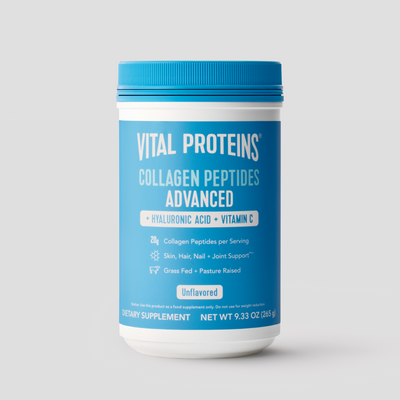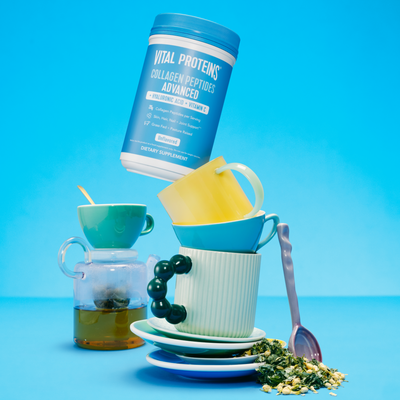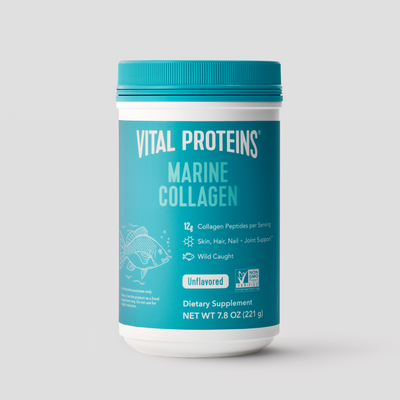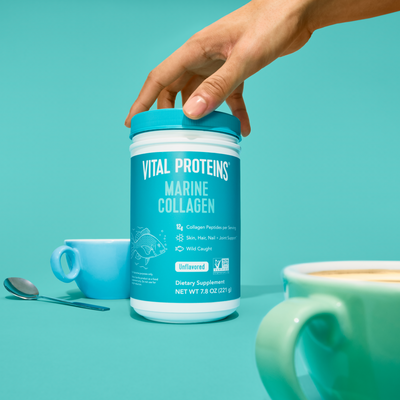Nutrition is complicated. But education is empowering. This is my main goal as a practitioner: to educate and empower, while debunking faulty fads. I see anywhere from 20 to 50 patients a week and on any given initial visit I am almost guaranteed to hear one of the following statements, so here I'm breaking them down for you.
Vital Note: This article has been made available for informational and educational purposes only. It is not intended to be a substitute for professional medical advice, diagnosis, or treatment. Always seek the advice of your physician or another qualified health provider with any questions you may have regarding a medical condition. Your licensed healthcare professional can best provide you with the diagnosis and treatment of any medical condition and assist you as well in deciding whether a dietary supplement will be a helpful addition to your regimen.
5 Nutrition Myths We're Debunking
1. Peanut Butter Is a Protein
This nut butter has a variety of benefits ifyou choose that fresh-ground two ingredient-type without added sugars and oils. But when my poultry and fish-eating patients tell me they eat peanut butter on their toast in the morning as a source of protein, I identify a knowledge deficit. Whole grain toast with peanut butter is a great option, but that’s not because it’s loaded with protein. While peanut butter contains protein, it's not a complete protein, meaning it lacks some of the essential amino acids your body needs.
The reason this food keeps you most satisfied in the morning is because of the fat it contains. Dietary fat slows digestion and provides major satiety. If peanut butter was your main source of protein, it would be incredibly hard to meet your daily requirements within normal calorie needs. Every 100 calories of peanut butter provide just 4g of protein, whereas the same amount of chicken provides around 16g.

2. Oats Are Loaded with Fiber
Eating shredded wheat or oatmeal for breakfast because your doctor said you need more fiber in your diet? Although he means well, the lack of fiber in the American diet really isn’t from the lack of grains in our diet. It’s from green leafy vegetables! Fiber is a carbohydrate found in plant-based foods. Our digestive enzymes can’t break it down like other carbohydrates, which allows it to bulk your stool for regular-ness but also feed your beneficial gut bacteria in your intestines through the production of short chain fatty acids. Although oats and whole grains do contain fiber, they aren’t essential for these benefits. Plus, leafy greens, starchy vegetables, fruits, and legumes actually have a higher fiber content and an added bonus of antioxidants. Increase your intake of vegetables, fruits, legumes and even nuts to easily meet your fiber needs.

3. Cereal Is Part of a Balanced Breakfast
A balanced diet doesn’t equate to a carbohydrate in both hands. Again, Americans are eating too many grains! Just like oatmeal, a bowl of whole grain cereal with milk and fruit doesn’t really provide the health benefits, balance, or satiety those TV commercials want you to believe. While many cereals are made with fortified nutrients, which can help increase your daily intake of vitamins and minerals, you should get these essential nutrients from whole foods sources whenever you can.
A good presence of carbohydrates, along with protein and fat, is most appreciated by your body, its energy levels, and blood sugar. Consider my new favorite breakfast: an egg scrambled with peppers, mushrooms, and sliced avocado paired with a side of blueberries.

4. Adding Beans to a Burrito Bowl Is Enough Protein
Similar to peanut butter, legumes can absolutely provide protein in your diet, although the richest sources of protein come from animals. If you're pursuing a plant-based lifestyle, then legumes, along with spirulina and nutritional yeast, will become staples to meet your body's needs. Just like with nut butter, beans on their own are not a complete protein.
Otherwise, let's consider the comparison of protein to calorie content thanks to Chipotle’s nutrition calculator: beans on my salad created a bowl of 61 percent carbohydrates with 9g of protein. That's four times as many carbs as protein. A salad with chicken, on the other hand, created a bowl of 26 percent carbohydrates with 33g of protein. This met the overall goal within 50 calories of the veggie option.
Related Articles
5. Spreading 'Healthy' Margarine on Toast Is Good for You
Caloric restriction remnants from the 1980s still linger. Butter was scrutinized for its saturated fat content. But there was never any good evidence that the switch to margarine was better overall. The dangers of trans fats – plentiful in most margarines – were overlooked. Enhancing foods with butter or olive oil, a dietary fat source, allows us to not only absorb nutrients but also provides a feeling of satiety.
Using that low-fat yellow butter spread is likely to make you feel hungry again shortly after. Looking for a lactose-free option? Try ghee! Either way, consider a quality grass-fed option, which provides more vitamin K and omega-3 fatty acids, along with conjugated linoleic acid (CLA), to support heart health.**
These common practices are often misinterpreted. The truth is not meant to discourage you, but to empower you! Eat what you want, but fully comprehend what, why, and how it affects you. And remember: everything in moderation is key. This foundational education allows you to fully discover your best nutritious lifestyle, your food freedom, and what powers you best!


















